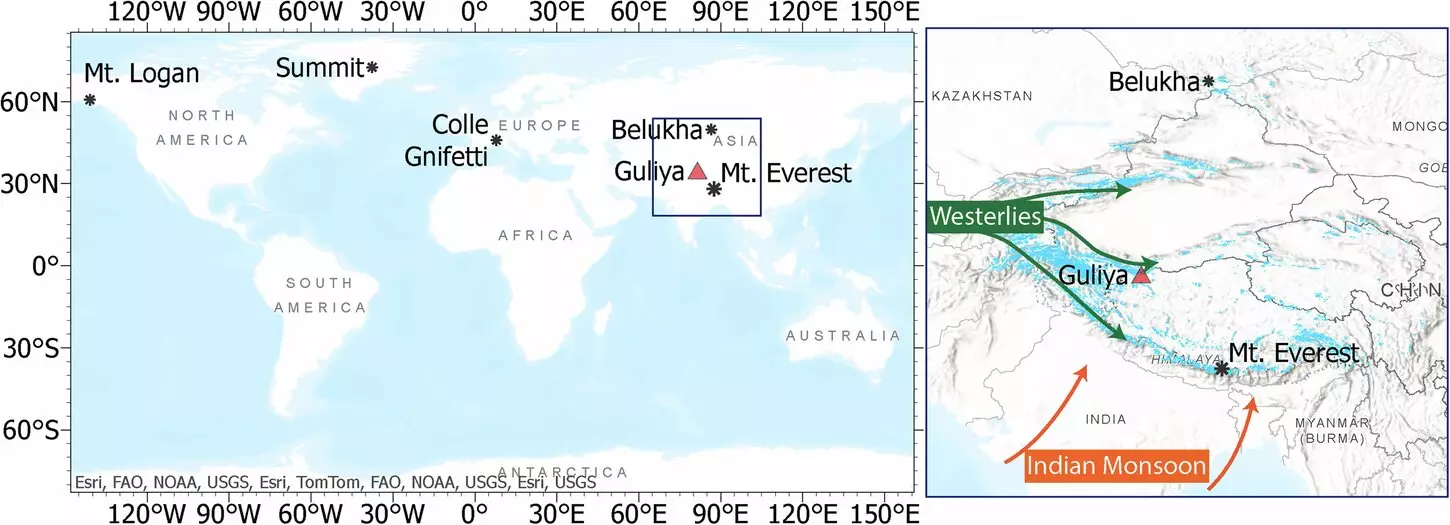Human intervention has reached some of the most pristine and remote locations on the planet, as evidenced by a recent study examining lead pollution in the Tibetan glaciers. A collaborative effort led by Dr. Franco Marcantonio of Texas A&M University has shed light on how this toxic metal has infiltrated one of the least accessible regions of Earth, specifically the Guliya Ice Cap. In their research, published in the journal Communications Earth & Environment, the team uncovered a disturbing trend: lead contamination levels have significantly surged since the 1970s, with peak contamination occurring from 2000 to 2007. This finding calls into question the long-held belief that the most remote areas remain untouched by industrial pollution.
The Tibetan Plateau’s towering elevation and harsh climate create an environment that seems a world away from human influence. However, the research team discovered that lead levels, largely attributable to emissions from leaded gasoline used in China, soared in this region. The scientists utilized sophisticated lead isotope ratio analysis to trace the origin of the contamination, providing a compelling narrative of human impact over millennia. This methodology not only tracked the pollutants but also unveiled the broader implications concerning atmospheric circulation patterns and historical environmental changes.
Faced with ice samples that date as far back as 36,000 years, researchers could juxtapose modern lead contamination with pre-industrial levels, painting a stark picture of humanity’s environmental footprint. Glaciers function as valuable historical archives, preserving layers that reveal atmospheric conditions and pollution levels long before the onset of industrialization.
Neurotoxin in the Highlands
Lead, known for its neurotoxic properties, poses a serious health risk for both ecosystems and human populations. The revelation that this pollutant has reached the Tibetan Plateau emphasizes the extensive reach of human behavior and industrial practices. Dr. Marcantonio emphasizes the magnitude of this finding: “Lead is a neurotoxin, and its presence in remote areas like the Tibetan Plateau shows the vast reach of human impact on the environment.” It highlights that even the most isolated ecosystems can be adversely affected by human actions, and the implications stretch into health considerations for wildlife and local communities.
This research initiates a critical dialogue regarding environmental stewardship and the necessity of understanding pollution’s pathways. As Dr. Marcantonio continues his studies, the focus will expand beyond glaciers to observe how contaminants traverse different environments—across oceans and within the human body. Such endeavors could reveal more records of pollution and its effects, broadening our comprehension of how these toxins circulate and persist in ecosystems.
The conclusions drawn from the study stress the importance of monitoring pollution in remote ecosystems, capturing attention for a global issue that often remains relegated to discussions concerning urban environments. We must all recognize that while human activities may seem far removed from places like the Tibetan glaciers, our actions resonate throughout the planet. The effects of our industrial habits echo in every corner of the Earth, and advancements in research are crucial in understanding these ramifications.
As researchers like Dr. Marcantonio endeavor to trace the movement of contaminants, it ignites a push for greater awareness and advocacy for environmental protection measures. Understanding how our actions impact distant locales can inspire a shift in policies, encouraging a reevaluation of how we manage pollutants. The journey through the remnants left in the ice could very well be a roadmap to clearer insights on both historical and present-day environmental challenges.
To protect both human health and natural ecosystems, it is imperative to reassess our relationship with the environment and the legacy of pollution that trails in our wake. Every discovery made in remote areas is a reminder that no locale is too distant from the effects of humanity’s choices, urging us to strive for sustainable practices that can mitigate future contamination.


Leave a Reply